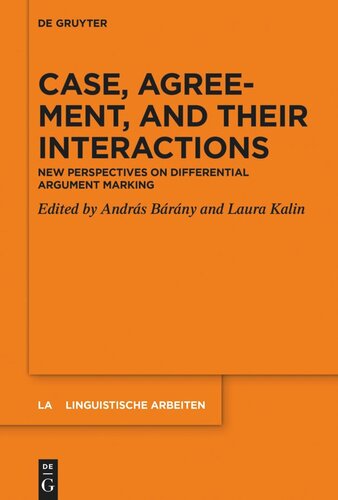

Most ebook files are in PDF format, so you can easily read them using various software such as Foxit Reader or directly on the Google Chrome browser.
Some ebook files are released by publishers in other formats such as .awz, .mobi, .epub, .fb2, etc. You may need to install specific software to read these formats on mobile/PC, such as Calibre.
Please read the tutorial at this link: https://ebookbell.com/faq
We offer FREE conversion to the popular formats you request; however, this may take some time. Therefore, right after payment, please email us, and we will try to provide the service as quickly as possible.
For some exceptional file formats or broken links (if any), please refrain from opening any disputes. Instead, email us first, and we will try to assist within a maximum of 6 hours.
EbookBell Team

4.1
40 reviewsDifferential argument marking has been a hot topic in linguistics for several decades, both because it is cross-linguistically widespread and because it raises essential questions at multiple levels of grammar, including the relationship between abstract processes and overt morphological marking, between case and agreement, and between syntax and information structure.
This volume provides an introduction into the current state of the art of research on differential case marking and chapters by leading linguists addressing theoretical questions in a wide range of typologically and geographically diverse languages from the Indo-European, Sinitic, Turkic, and Uralic families. The chapters engage with current theoretical issues in the morphology, syntax, semantics, and processing of differential argument marking. A central issue addressed by all the authors is the adequacy of various theoretical approaches in modelling (different varieties of) differential case marking, such as those determined by topicality, those driven by cumulative factors, and those that involve double marking.
The volume will be of interest to students and researchers working on cross-linguistic variation in differential marking and its theoretical modelling.